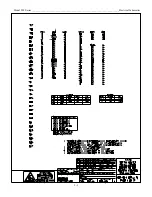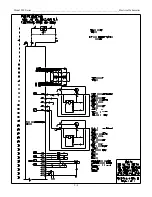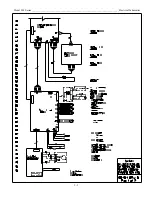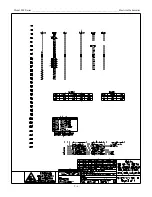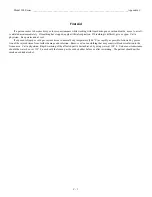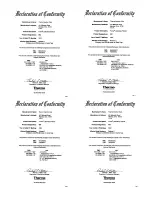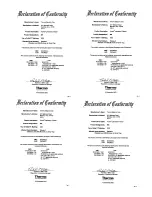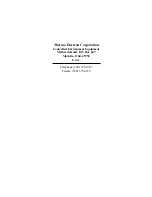
Introduction
The safe handling and use of liquid nitrogen in cryogenic refrigerators and dewar flasks is largely a matter of knowing the
potential hazards and using common-sense procedures based on that knowledge. There are two important properties of liquid nitro-
gen that present potential hazards:
1. It is extremely cold. At atmospheric pressure, liquid nitrogen boils at -320°F (-196°C).
2. Very small amounts of liquid vaporize into large amounts of gas. One liter of liquid nitrogen becomes 24.6cu. ft. (0.7ml) of
gas.
The safety precautions in this booklet must be followed to avoid potential injury or damage which could result from these two
characteristics. Do not attempt to handle liquid nitrogen until you read and fully understand the potential hazards, their conse-
quences, and the related safety precautions. Keep this booklet handy for ready reference and review.
Note:
Because argon is an inert gas whose physical properties are very similar to those of nitrogen, the precautions and safe prac-
tices for the handling and use of liquid argon are the same as those for liquid nitrogen.
Use only containers designed for low temperature liquids.
Cryogenic containers are specifically designed and made of materials that can withstand the rapid changes and extreme tempera-
ture differences encountered in working with liquid nitrogen. Even these special containers should be filled SLOWLY to minimize
the internal stresses that occur when any material is cooled. Excessive internal stresses can damage the container.
Do not cover or plug the entrance opening of any liquid nitrogen refrigerator or dewar. Do not use any stopper or other
device that would interfere with venting of gas.
These cryogenic liquid containers are generally designed to operate with little or no internal pressure. Inadequate venting can
result in excessive gas pressure which could damage or burst the container. Use only the loose-fitting necktube core supplied or one
of the approved accessories for closing the necktube. Check the unit periodically to be sure that venting is not restricted by accumu-
lated ice or frost.
Use proper transfer equipment.
Use a phase separator or special filling funnel to prevent splashing and spilling when transferring liquid nitrogen into or from a
dewar or refrigerator. The top of the funnel should be partly covered to reduce splashing. Use only small, easily-handled dewars for
pouring liquid. For the larger, heavier containers, use a cryogenic liquid withdrawal device to transfer liquid from one container to
another. Be sure to follow instructions supplied with the withdrawal device. When liquid cylinders or other large storage containers
are used for filling, follow the instructions supplied with those units and their accessories.
Do not overfill containers.
Filling above the bottom of the necktube (or specified maximum level) can result in overflow and spillage of liquid when the
necktube core or cover is placed in the opening.
Never use hollow rods or tubes as dipsticks.
When a warm tube is inserted into liquid nitrogen, liquid will spout from the top of the tube due to gasification and
rapid expansion of liquid inside the tube.
Nitrogen Gas Can Cause Suffocation Without Warning!
Store and use liquid nitrogen only in a well-ventilated place
.
As the liquid evaporates, the resulting gas tends to displace the normal air from the area. In closed areas, excessive amounts of
nitrogen gas reduce the concentration of oxygen and can result in asphyxiation. Because nitrogen gas is colorless, odorless and
tasteless, it cannot be detected by the human senses and will be breathed as if it were air. Breathing an atmosphere that contains less
than 18% oxygen can cause dizziness and quickly result in unconsciousness and death.
Note:
The cloudy vapor that appears when liquid nitrogen is exposed to the air is condensed moisture; not the gas itself. The issu-
ing gas is invisible.
Never dispose of liquid nitrogen in confined areas or places where others may enter.
Disposal of liquid nitrogen should be done outdoors in a safe place. Pour the liquid slowly on gravel or bare earth where it can
evaporate without causing damage. Do not pour the liquid on pavement.
A - 2
Model 900 Series _____________________________________________________________________________Appendix A
Summary of Contents for 900 Series
Page 1: ...900 Series Forma 86C ULT Freezer Operating and Maintenance Manual Manual No 7010902 Rev 8 ...
Page 62: ......
Page 63: ......
Page 64: ......
Page 65: ......








